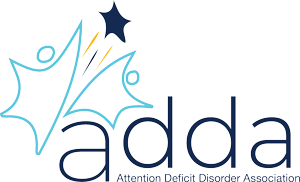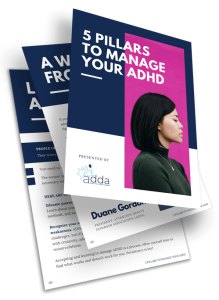
Small Talk for Adults With ADHD: A Guide to Better Conversations
Making small talk can feel dreadful.
You might feel like you’re wasting time talking about topics no one cares about just to be polite. Or perhaps your conversations are awkward because you don’t know when or how to jump in.
But when you don’t engage in small talk, others may think of you as awkward, shy, or disinterested. Sometimes, you may even appear plain rude to them.
Plus, without any communication and interaction, it can be hard to get to know those around you and build deeper relationships.
While it can feel uncomfortable, avoiding small talk altogether might make you fear it even more. However, with practice, you can overcome this fear and minimize the impact of ADHD on your conversational skills.
Originally published on November 23rd, 2021, this post was updated and republished on March 22nd, 2024.
[wpcode id=”471443″]
What Is Small Talk?
Small talk serves as a conversation starter for people who don’t know each other well. It’s a polite conversation involving light and unimportant topics you’d typically engage in for a few minutes.
This kind of conversation can occur anywhere, but most people engage in it at work, university, parties, and gatherings.
While the topics are trivial, small talk can play an essential role in helping to build rapport. It acts as a bridge between your first “hi” and a deeper connection with the person you’re talking to.
Symptoms of ADHD and Small Talk
With ADHD, small talk can be tricky. That’s because certain symptoms of ADHD can impact your conversations with other people.
Here are some symptoms that might affect the way you communicate and participate in small talk:[1]
- Interrupting others, finishing their sentences, and blurting out answers
- Unintentionally saying things that might be hurtful to the other person
- Getting distracted or drifting away during conversations
- Going off-topic during conversations
- Having trouble waiting for your turn to speak
- Talking excessively or too quickly
Being aware of which symptoms affect your conversations the most can be beneficial. Understanding these social challenges will help you create tailored strategies to overcome them.
How To Make Small Talk with ADHD
You may worry about being socially awkward due to adult ADHD.
The following tips are small, actionable steps that can help you improve your conversational skills:
- Have topics prepared in advance. Some common small topics include sports, work, food, travel, and hobbies.
- Practice small talk with a friend. Get your friend or family member to role-play a stranger so you can practice starting and holding a conversation with them.
- Join a community or ADHD support group. These groups can serve as a safe space for you to get accustomed to chatting with strangers in a group setting.
- Take advantage of opportunities to create small talk. Instead of avoiding social situations, step outside your comfort zone and practice your social skills. For instance, you could initiate a chat with a colleague you bump into in the breakroom.
Most importantly, try to be compassionate and understanding toward yourself.
A few awkward conversations here and there are perfectly normal. With time and practice, anyone can learn to build their confidence and social skills.

10 Steps to Hold a Good Conversation With ADHD
Starting and holding a conversation with someone you don’t know well can be challenging.
Let’s explore how to start on the right foot and hold conversations that flow naturally.
1. Initiate With Confidence
A warm smile, firm handshake, and friendly “Hello” can help you welcome the other person into a conversation. If you don’t know the other person’s name, simply remind them of yours.
2. Foster Reciprocity through Inquiry and Comments
A lot of people enjoy talking about themselves and their experiences. A great way to get a conversation rolling is to ask general questions about the other person.
Examples include, “Have you tried any new restaurants around here lately?” or “How long have you been working at your company?”
3. Develop the Discussion
Listen actively to what the other person says, then build your discussion by asking more or adding your own comments.
You can ask them to tell you more about the topic or ask a follow-up question. For example, you can ask about the food, ambiance, or service of the new restaurant the person tried.
4. Find and Build on Common Interests
You can join volunteer groups, clubs, sports teams, and other activities you’re interested in. This allows you to connect with people with similar interests and experiences, making it easier to have fun conversations.
5. Listen Actively and Respond Thoughtfully
Conversations are a two-way street, and listening is key to a good conversation.
Here are a few tips to help you listen actively and reduce distractions during a conversation:
- Turn your body to the speaker and nod to show you’re paying attention
- Repeat or paraphrase what the speaker says occasionally during the conversation
- Put away any distractions, such as your mobile phone
- Maintain good eye contact with the other person

6. Encourage With Supportive Interjections
Short comments let the speaker know you’re listening and encourage them to continue. Don’t overthink it. You can use simple comments like, “Exactly,” “I can see that,” or “You’re right about that.”
7. Observe and Understand Nonverbal Cues
Body language and tone of voice make up a considerable part of the conversation. From time to time, observe the other person’s body language.
You can look for signs that the other person is uncomfortable, such as avoiding eye contact or turning their body away from you. This will give you more information on whether to continue the conversation or step back.
8. Mind Your Tone and Body Language
Your stance, tone, and body positioning can help you appear confident, friendly, and welcoming.
Remind yourself to slow down and speak clearly. Be careful of your tone of voice as well. For example, “I can’t believe you did that!” can come across as praise or condescending.
Leaning in slightly, maintaining eye contact, and keeping your arms relaxed can also help the other person feel more comfortable and engaged.
9. Maintain Momentum With Curiosity
Be curious, but don’t interrogate. Ask thoughtful questions and add bridging comments like “Oh, I’ve never heard of that. I’d love to know more.”
10. Commit to Practice
Building your conversation skills with ADHD takes time and practice. Set yourself a goal to practice once a day. This can happen anywhere, whether you’re at a family dinner, work, or getting a coffee.

Building and Maintaining Friendships With ADHD
Bonds take time to build, and small talk is the first step. Through these conversations, you’ll learn more about the other person.
Small talk could mark the start of a new friendship, but there’s no need to stress about it if it doesn’t happen right away. Don’t overshare or push it too far. It’s also best to avoid sensitive or touchy topics like politics, religion, or finances. You don’t want to get into a heated debate right off the bat.
Overcoming Social Awkwardness With ADHD
Feeling awkward or shy occasionally is common, especially when you’re around people you don’t know.
The best way to conquer social awkwardness is to put yourself in situations where you can practice. Role-playing is a great way to practice small talk and conversations.
If you have friends or family who know you well and have observed your interactions, you can even ask them for feedback on what you can do to improve. This helps nurture a self-awareness of your strengths and what you should work on.
How Adults With ADHD Can Find Opportunities to Make Friends
Usually, we form friendships through shared experiences and interests. So, think of hobbies or activities you’re passionate about and find a way to pursue them in a group setting.
This might look like joining a volunteer group on the weekends or attending a pilates class during the week.
Adults with ADHD can also join a support group to find a community and make new friends who understand what they’re going through.
ADDA+, with 5,000+ members, is one such community. You’ll get to connect with other adult ADHDers who know what you’re going through and access resources, courses, and expert-backed tips curated to help you achieve different goals in your life, career, and relationships.
References
[1] Substance Abuse and Mental Health Services Administration. DSM-5 Changes: Implications for Child Serious Emotional Disturbance [Internet]. Rockville (MD): Substance Abuse and Mental Health Services Administration (US); 2016 Jun. Table 7, DSM-IV to DSM-5 Attention-Deficit/Hyperactivity Disorder Comparison. Available from: https://www.ncbi.nlm.nih.gov/books/NBK519712/table/ch3.t3/






1 Comment
I have difficulty with large groups, but not in small groups. I am basically an introvert who extraverts reasonably well but I gather my thouhts and feelings when I’m alone.